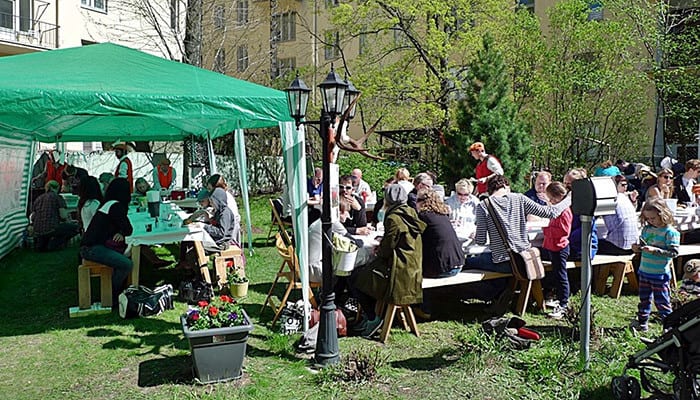From its origins in 2011, the world’s largest food carnival, Restaurant Day, has spread to more than 70 countries. Restaurant Day is a consumer movement that aimed to provoke market change. Researchers from Emlyon business school, Lifestyle Research Centre, and Aalto University, Finland believe it was so successful because it operated in a completely different way from new social movements in general. Usually, the leaders of a movement determine what a movement is and does, and then try to convert others to their cause. Restaurant Day, however, invited everyone to take part in an opportunity to be as creative as they wanted, say the researchers.
The original aim of the carnival was to revolutionize restaurant culture by cutting unnecessary, bureaucratic red tape. The idea behind the original event was that anyone could set up a restaurant of their liking anywhere for one day without acquiring the necessary permits. According to the organisers, Restaurant Day was a protest against the constraining regulation of restaurants and a way to let off steam regarding the effects of regulation on gastronomic exploration.
‘The participants found setting up a restaurant of their own a personally meaningful and ambitious project. It inspired people to participate and try something new each time the event was held. The movement’s leaders were not essential – instead, every participant was. Moreover, many participants in Restaurant Day did not see their involvement as political activism, which further lowered the threshold for participation’, says Henri Weijo, Assistant Professor in Marketing from the Aalto University School of Business.
‘What started as a small hipster movement rapidly grew into a popular festival where everyone, both old and young people as well as native Finns and immigrants, prepared food in perfect harmony,’ Weijo explains.
Restaurant Day invited people to test the limits of their creativity, regardless of their age and background. This attracted all different kinds of people to the movement with widely varying agendas from immigrants keen to share their cultural pride, to girl scouts funding a field trip.
Originating in Helsinki, Finland, the carnival celebrated restaurant culture and gastronomy in over 2,000 pop-up restaurants in some 75 countries, on average four times a year.
Researchers at Aalto University and EMLYON say that the revolution was carried out in a very Nordic way.
“Nordic societies tend to consensual political processes that espouse societal change through dialogue among civic group interests. Protest movements end up marginalised if they fail to capture ideas of inclusivity or popular benefit, and with that the support or sympathies of the political parties. In the beginning, political authorities, the press, and restaurant industry vocally opposed Restaurant Day. However, in the end it attracted such a wide range of participants and became a significant tourist attraction, such that opposition turned to support”, says Eric Arnould, Adjunct Professor in Marketing at EMLYON.
Organisers decided to discontinue Restaurant Day in its original form last year in 2017. However, the movement for pop-up restaurants that can be set up anywhere, without permits will be celebrated on the anniversary of the first event, which is the third Saturday in May.
The study in question has just been published in the Journal of Consumer Research, the world’s most important scientific journal on consumer research. The study on Restaurant Day is the first article in the publication based entirely on Finnish material.
For more information:
Eric Arnould
Professor in Marketing
EMLYON Business School
arnould (at) em-lyon.com
Article:
Weijo, Henri A.; Martin, Diane M.; Arnould, Eric J.: Consumer Movements and Collective Creativity: The Case of Restaurant Day. Journal of Consumer 2018. DOI: 10.1093/jcr/ucy003

